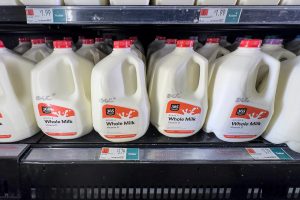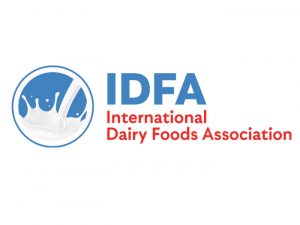
Moreover, nonfat dry milk/skim milk powder posted a year-over-year increase for the first time. This is the largest dairy export category. Myers remarked that exports “continue to be on track to set new volume and value records.”
Indeed, the USDA’S December 2022 “Dairy: World Markets and Trade” reported in 2022, record exports on a value basis are being set across all dairy commodities. Strong international dairy product prices are driving these exports.
The report continues, “Through October, dairy export values are up 25 percent, with robust growth across the major product groups including skim milk powder (NDM/SMP), whey, lactose, cheese, and butter; however, from a volume perspective, average export growth across commodities is a more modest 5 percent.”
Myers also reported that U.S. milk production in November was 18.25 billion pounds, which represented an increase of 1.3 percent over November 2021. The number of cows over that year, at 9.42 million, rose 0.4 percent. Production per lactating cow was 74.3 pounds per day.
Regarding prices, the November CME price for butter brought $2.93 versus $1.99 the year before, while block cheese price achieved $2.18 vs $1.86. The nonfat dry milk global dairy price at $1.41 contrasts with $1.56 in 2021.
The latest Class III and IV futures milk price forecasts, Myers noted, that after stabilizing through the first part of November, Class III has begun to decline. As of Dec. 15, the 12-month average Class III was 79 cents less than mid-November at $19.80 per cwt. But Class IV continued its months-long decline, with a 12-month $20.39 average price.
However, Myers said that although those average milk prices were down, the current prices remain well above the five-year average prices of $17.66 for Class III and $16.78 for Class IV.
The dairy margin coverage of $19.71 per cwt in October did not trigger an indemnity. Feed cost fell 59 cents to $15.19 per cwt, and the all-milk price increased $1.50 to $25.90 per cwt.
Myers stressed that the USDA has extended the 2023 enrollment period to Jan. 31, 2023. He reviewed dairy margin coverage’s value as a risk management tool each year since it began in 2019 by adding a net benefit to enrolled dairy farms.
Because margins are projected to be much lower in 2023, and indemnities are expected from January through August, dairy managers may consider taking advantage of the program if not yet enrolled. The enrollment must be completed at a local Farm Service Agency office.
The USDA referenced trade report summarized the conditions for milk production and several products to forecast the exports of major countries for 2023.
In Argentina, milk output is forecast to rebound in 2023, reflecting normal weather after a dry summer and cold autumn impacted 2022 yields. Also, improved availability of concentrates, fertilizers and fuels plus investments in comfort-related technology and more efficient husbandry practices should increase milk production.
Although record milk, low hay and easing grain prices plus above average rainfalls are favorable to boost dairy cow numbers and lead to higher milk production, Australia’s milk production is expected to decline.
Labor shortages, soaring energy and fertilizer costs cause dairy farmers to scale back cow numbers and convert to beef cattle production.
The European Union-wide drought in 2022 hindered fodder production and depressed milk production. Plus, higher production costs for energy, fertilizer and feed negated higher farm-gate milk prices. Mediterranean member states fared better, driven by consumer demand for dairy products like goat cheeses or mozzarella buffalo, as well as local milk production for the products protected by geographical indication.
However, the French and Italian farmers’ fodder shortages could not meet their GI feeding standards production.
The decline in dairy cow numbers in the EU has eroded EU production despite their continual milk productivity. In addition, the planned new Common Agricultural Policy and accompanying Farm to Fork Strategy will likely add uncertainty for their dairy sector. The EU milk production is forecasted to decline in 2023.
New Zealand’s milk production is expected to decline marginally in 2023 due to a smaller dairy herd and slightly lower milk per cow yields. A third consecutive La Niña weather pattern, as well as a smaller feed base, impacted by a cold and wet winter slowing spring pasture growth, coupled with a smaller winter forage crop from prolonged dry conditions in the first half of 2022 are expected to impact cow yields.
Cow numbers are also forecast to decline, continuing their trend of herd contraction. Rising input costs and global supply chain disruptions also hampered producers.
Although gains were widespread, increased shipments of high-value cheese and butter boosted the value of U.S. dairy exports in October to $818.7 million. Through 10 months, the value of 2022 U.S. dairy exports stood at a record $8.08 billion, already topping the $7.7 billion set in 2021.
During Myers’ report, he commented that U.S. exports in that period throughout 2022 continued to be on track to set volume and value records.

























